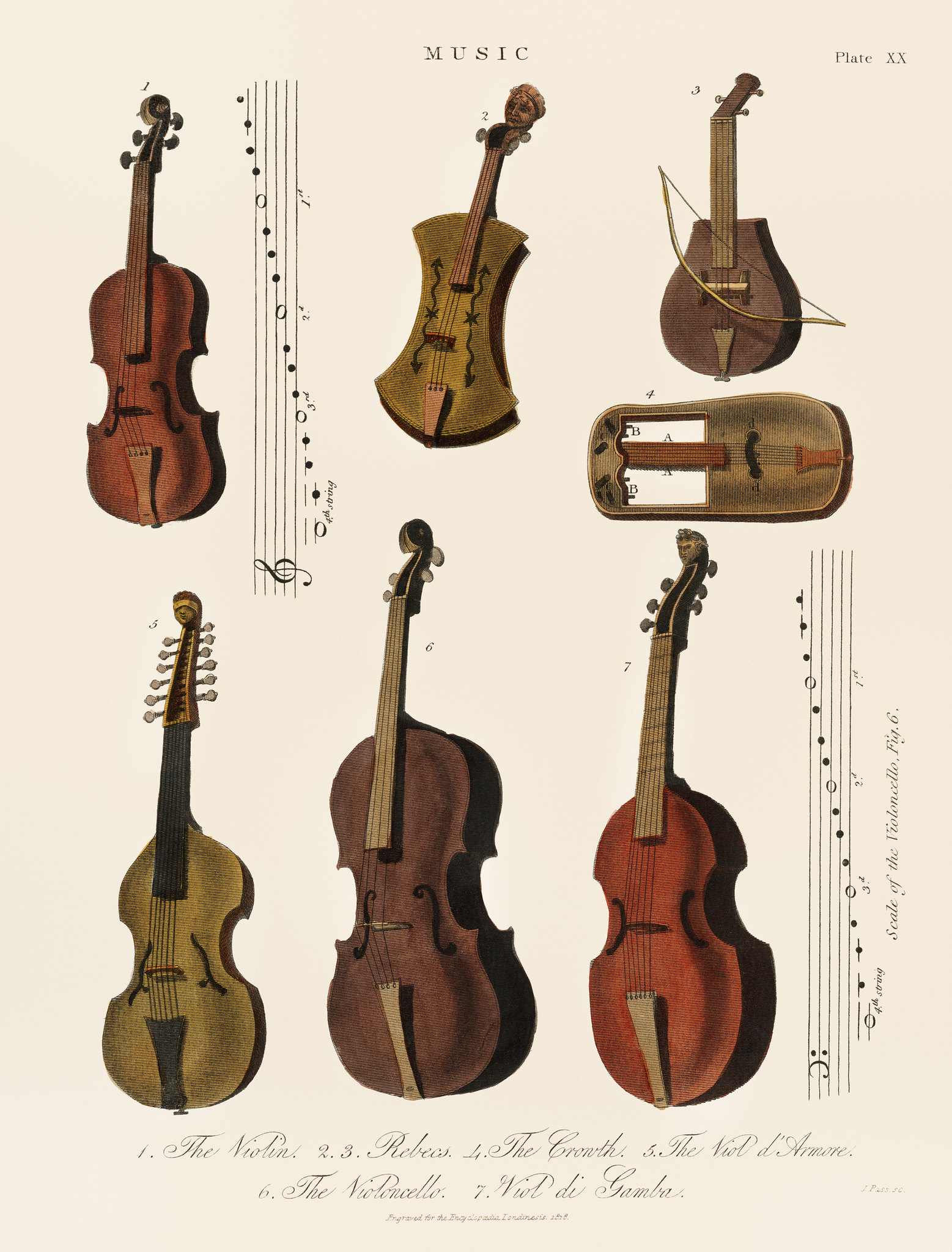Violin: History, Fun Facts, and Benefits of Learning
Violin is one of the most recognized and popular instruments in the world, thanks to the versatility it offers to play diverse music styles.
Generally associated with classical music, the violin is an excellent combination for rock and country music as well. Not surprisingly, the violin has no limits when it comes to what it can do. This instrument’s tone can ensemble a range of music styles, including fast, slow, and sanguine.
The violin also gets its fame from being the tallest one among all of the string instruments. This instrument rose to popularity in the sixteenth century. Since then, it has remained a matchless, comprehensive, and all-around string instrument.
History of the Violin
The violin had been used to make music for centuries before it shot to fame in the 16th and 17th centuries. Andrea Amati and Antonio Stradivari are recognized for taking the violin to a stature where it stands today.
So, how did the modern violin evolve over the centuries? Well, the evolution was steady and complex. The violin’s development is rooted in other stringed instruments like the pear-shaped lira, the two-stringed rabab, and the three-stringed rebec. The modern violin reflects signs of these instruments.
While stringed instruments have a rich history in folk music, the violin quickly gained recognition after going mainstream. The modern violin surfaced in Italy in the 16th century. The area where it emerged would later conserve the violin making tradition for the centuries to follow.
Lombardy region in northern Italy was famous for being home to Maple and spruce – the two types of wood then and now used and preferred by most violin makers. While the city of Brescia was a pioneer in the art of making violins, Cremona soon emerged as home to the famous violin makers, including the Amati family, Luthiers, Giuseppe Guarneri, and Antonio Stradivari.
The violin, as compared to other stringed instruments, is elegant by itself in that it is the epitome of inclusiveness. While the emergence of the violin was gradual, the modern form of this instrument came to the limelight suddenly during the fifteenth century. The bad news is that none of those initial violins exist today. Henceforth, the history of the violin is deduced from paintings from that period that feature violins.
As per recorded history, the earliest violins that still exist today were made by Andre Amati from Cremona and Gasparo di Bertolotti from Salon. The oldest violin still in existence today was built in 1565 by Andre Amati.
The violin became an essential instrument in music when composers like Claudio Monteverdi included it into their compositions in the seventeenth century. Moreover, musicians and composers in the seventeenth and eighteenth centuries focused on the strings, which made the violin an integral part of the modern orchestra.
Fun Facts About The Violin
There are certain facts about the violin that you may not have known. Here are the most amazing of them:
While you may think that playing the violin is a purely artistic activity, the fact is that you can burn about 170 calories per hour by playing the violin.
Wonder who made the most expensive violin in the world? Valued at $18 million, the most expensive violin was made in 1741 by Giuseppe Guarneri.
The largest playable violin in the world is 4.27 meters tall and 5.22 meters wide. It was produced by 15 violin makers in Germany.
The tiniest violin in the world has a size of 37 millimeters, but it is not known as to whether it is playable.
Playing the violin does not only make you an artist but also boost your cognitive abilities. Studies indicate that children who get music training at an early age experience faster and better cognitive and motor skills.
Violin bows are generally made of 150-200 hairs. Different materials can be used to make the bow, such as horsehair and nylon.
Violins are available in varying sizes. Usually, young children will kick off with a violin lesson with a 1/32 or 1/16 size violin. As the children grow, they will slowly advance up to full-sized violins.
Maple and spruce are the primary and most preferred woods that are used to produce violins. These woods produce excellent violins.
The art of making a violin is just as complicated as playing it. It takes putting together of 70 different pieces of wood to create the modern violin.
Why Choose the Violin?
If you want to learn an instrument and are not sure where to begin, you may consider picking up the violin. The main reason why the violin is the best instrument to start with is that it offers you complete liberty to choose what music to play.
The violin not only allows you to play the traditional music of Asian, Eastern and Middle Eastern origins, but also pop, rock, classical, jazz, folk, modern, country, and Americana music. Many young children find fascination in the violin. Such children should be encouraged to take violin lessons.
Here are some reasons why you should encourage your little one to pick the violin:
Playing the violin stimulates different areas of the brain, helping improve motor skills and coordination between different areas of the body and the mind.
Violin lessons leave positive effects on the memory and attention span of children. Learning a violin requires more attention and training, which means your kid’s memory and academic performance will improve. Music lessons impact cognitive abilities in positive ways.
Kids who learn the violin are found to be more disciplined. During the lessons, they are encouraged to practice every day. They get a sense of responsibility that can benefit them when they grow up.
Violin training improves speech, reading skills, and cognitive functions in children. Playing the violin even helps children with psychological disorders, according to a study by Dr. James Hudziak’s.
Playing the violin can also improve the social skills of children. Violin classes not only provide children the opportunity to mingle but also enhance their self-esteem and self-discipline through continuous practice and reinforcement.
Playing the violin allows us to release our feelings and emotions, which is often difficult during teenage. Violin lessons let children constructively discharge their feelings.
If you are interested in signing your child up for our music lesson or require more information, be sure to contact us today.
Learn more about violin lessons at Stage Music Center
Other music subjects you might be interested in from our blog:
Importance of Introduction to Music at an Early Stage: Little Mozart
ADHD Natural Treatment - Music Therapy


